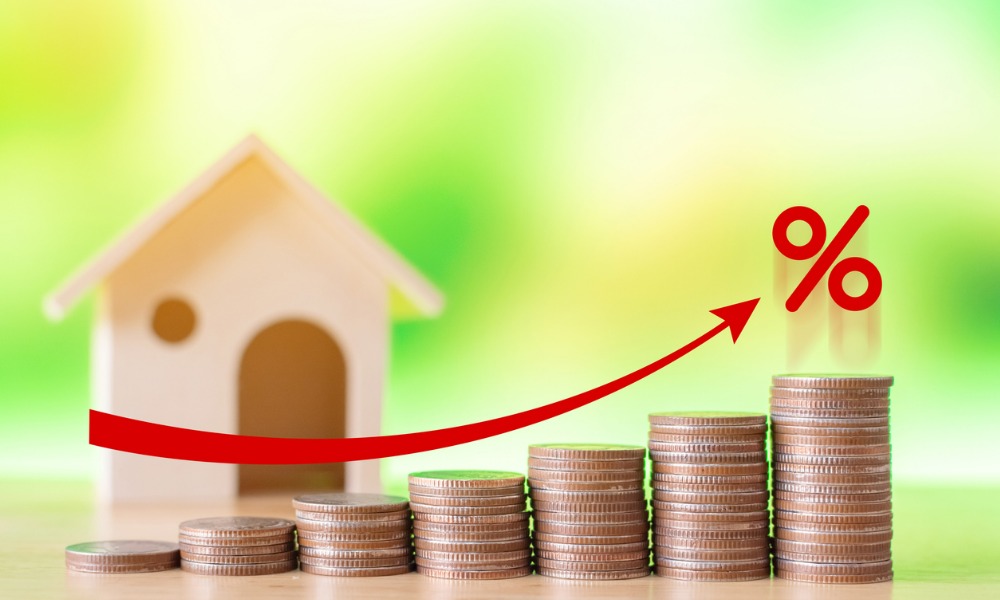They are only expected to keep climbing…

US mortgage rates are still on the rise, with the 30-year fixed-rate mortgage jumping to an average of 5.11% this week.
Freddie Mac’s latest reading showed that the average 30-year conventional rate climbed 11 basis points from 5% a week ago. The 15-year fixed-rate mortgage increased from 4.17% to 4.28%, and the five-year Treasury-indexed hybrid adjustable-rate mortgage rose from 3.69% to 3.75%.
The uptick in mortgage rates is causing a pullback in overall mortgage applications, which fell 5% on a seasonally adjusted basis, according to the Mortgage Bankers Association.
Read more: Mortgage applications continue to fall as interest rates hit 5%
“Mortgage rates increased for the seventh consecutive week, as Treasury yields continued to rise,” said Freddie Mac chief economist Sam Khater. “While springtime is typically the busiest homebuying season, the upswing in rates has caused some volatility in demand. It continues to be a seller’s market, but buyers who remain interested in purchasing a home may find that competition has moderately softened.”
Mortgage rates are expected to keep climbing as the Federal Reserve continues to raise its benchmark interest rate to combat the 40-year high inflation. Lenders are already feeling the squeeze on margins, and more homebuyers are getting discouraged, but Robert Heck, vice president of mortgage at Morty, said the Fed’s actions are designed to stamp out inflation and preserve the overall health of the economy, not tank the housing market.
Read more: Fed lays out plan to prune balance sheet by $1.1 billion
“Of course, if inflation were to spiral out of control and the Fed took more aggressive action, rates could rise to a level at which they could send demand and affordability into a steep downward spiral. Current market indicators, including the Fed funds futures, are not projecting interest rate levels in the next 10 years to reach a level that would send mortgage benchmarks above 7%. Treasury Rates were well above 4% when mortgage rates were above 6% in the early 2000s, and the entire yield curve sits below 3% currently,” Heck said.
“The bottom line is that there’s a lot of uncertainty in the market and a lot left to play out. We’re a third of the way through 2022, and we’ve already seen quite a bit of what was predicted for the year play out,” he added. “Headlines pointing to a housing bubble are oversimplifying things. While there’s no question that price growth has been significant over the past two years, we were still seeing significant demand up until rates rose over the past month. “



